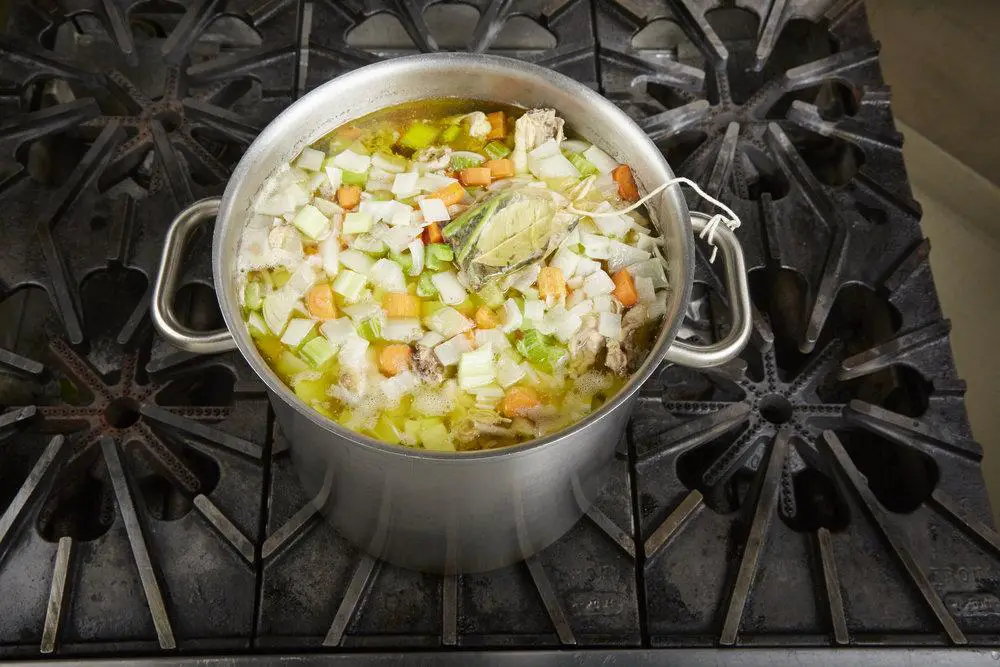Usage of Stocks
Without stocks, there would be no French cuisine. It is called fonds de cuisine, which translates literally as “Foundations of cooking”. They are a crucial element in soups, sauces, braises, and stews. Good stocks are made by simmering raw meat or fish, and bones, with aromatic vegetables and herbs, peppercorns, water, and a little salt. Richly colored brown stocks, made with beef and veal, are made by first browning the meat and bones in the oven before simmering them with the remaining ingredients; brown stocks are used in brown sauces and with red meats and game. Light-colored white stocks, made with veal,
poultry and fish require no browning and have a lighter flavor suitable for the delicate flavors of poultry, fish, and vegetables.
Stocks must be simmered long enough to extract the maximum flavor from the ingredients. For a veal stock, this means at least 3.5 hours, while a chicken stock requires only 2.5 hours and a fish stock just 20 minutes. The stock must be carefully skimmed after it is brought to a boil to remove any fat and gray scum that rise to the surface, but it must never be boiled during cooking, as this would make it cloudy.
Stocks may be refrigerated for several weeks provided they are brought to a boil every 2 to 3 days. Or they may be reduced to a thick, syrup glaze, called a glace, that will set to a very firm consistency when chilled and may be refrigerated for several months (glaces are used as sauce bases of or to intensify the flavor of and give body to sauces). Stocks may also be frozen for several months; it makes good sense to freeze them in small quantities so that you need thaw only the amount necessary.
